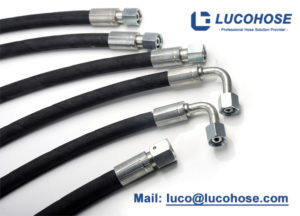 The primary purpose to establish safe procedures regarding how to handle hydraulic hose assemblies is to prevent employee accidents. Industry and legal standards provide sensible instructions in relation to handling, inspections and usage periods of hydraulic hoses. Observing these regulations not only offers safety and legal compliance, but also financial benefits in that machine operational time is vastly increased. Windsor Manufacturing supports its customers with perfectly tailored hydraulic hose and fittings.
The primary purpose to establish safe procedures regarding how to handle hydraulic hose assemblies is to prevent employee accidents. Industry and legal standards provide sensible instructions in relation to handling, inspections and usage periods of hydraulic hoses. Observing these regulations not only offers safety and legal compliance, but also financial benefits in that machine operational time is vastly increased. Windsor Manufacturing supports its customers with perfectly tailored hydraulic hose and fittings.
Hydraulic systems and hydraulic fluid can be hazardous to workers in several common scenarios.
Improper hose end selection
Never mix and match low and high pressure fittings, and brands which have been tested together. Mismatched components may cause a rupture in a hose or fitting.Pinhole leaks
Never use your hands to locate a leak in a hydraulic line, because the hydraulic fluid is highly pressurized and can penetrate your skin or eyes causing severe injury. When trying to locate a leak in a hydraulic hose use proper eye protection and gloves.Component maintenance or replacement
Always relieve hydraulic pressure in a operational system before detaching or attaching a hydraulic hose or component when making repairs. The hot fluid in the system is under extreme pressure. If a worker is exposed to hydraulic fluid while removing or adjusting components, he or she may sustain burns, bruises, cuts, abrasions, or injection of fluid into the skin.
Safe Operating Procedures
Follow these recommendations when using equipment with hydraulic systems:
Before leaving the machine, lower the hydraulic work unit to the ground and relieve hydraulic pressure by moving the control valve back and forth several times.Park the machine in an area where children are unlikely to come into contact with it.To keep the machine in place during transportation, lock the cylinder stops.Use cylinder stops, locks, or blocks for raised equipment or components when servicing hydraulic components or performing maintenance.To reduce the risk of escaping oil, make sure all the line connections within the system are tight.Use a non-volatile cleaning solution when washing parts.Keep hydraulics properly adjusted for better control of the machine.



